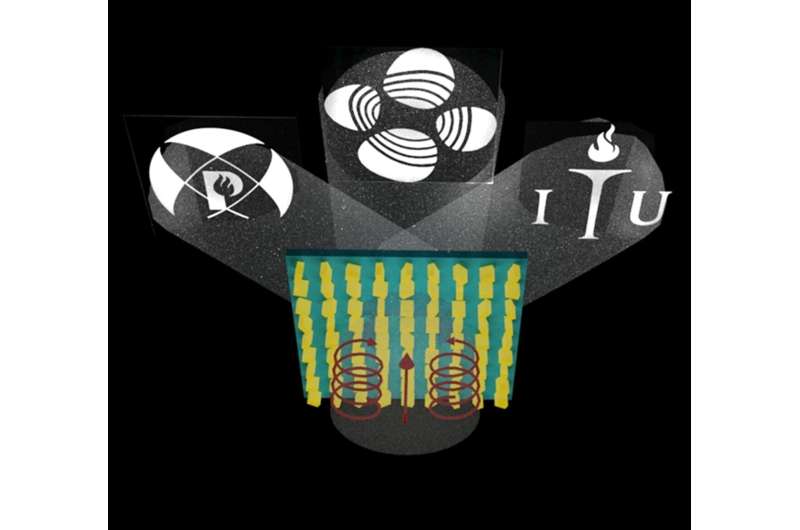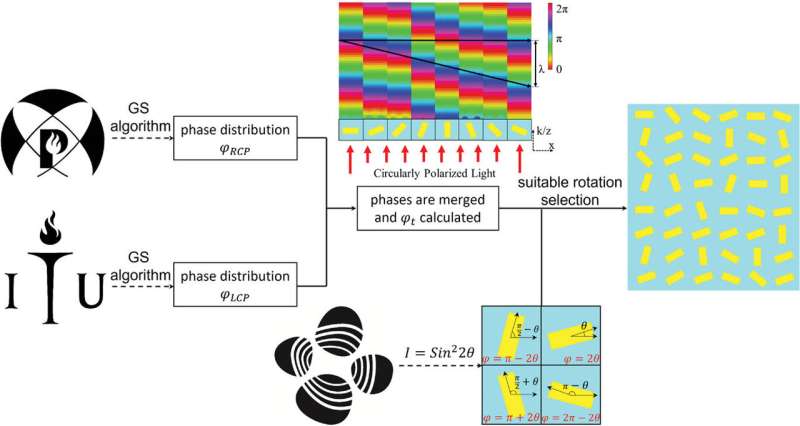Single-cell-driven, tri-channel encryption meta-displays

Pockets of the POSTECH campus are turning into metaverse-ready spaces. Leveraging lessons learned from the COVID-19 pandemic, POSTECH has employed metaverse learning to enable students to conduct experiments and receive training the same way they do in the physical classroom. All they have to do is wear a virtual reality (VR) device before entering a laboratory or taking a tour of a nuclear power plant. Taking it a step further, what if the professor and the students can simultaneously see different content tailored to each other in class?
A POSTECH research team led by Professor Junsuk Rho (Department of Mechanical Engineering and Department of Chemical Engineering) with Ph.D. candidates Joohoon Kim and Junhwa Seong (Department of Mechanical Engineering) developed a tri-channel encryption metaverse display.
A multi-functional metasurface used in the display demonstrates different images by manipulating the incident polarization of light, promoting the common use of ultra-compact displays and next-generation anti-counterfeiting devices, which project different images depending on where you look at them.
A metasurface is a sheet of artificial material with arrays of nanostructures, demonstrating a superb light steering capability. Each nanostructure is tinier than a wavelength, challenging researchers to find a way to save as many data sets in it as possible.
Furthermore, the conventional metasurface can contain only one piece of information in one nanostructure, requiring changes in shape or array to save multiple pieces of information. These changes require complicated design fabrication processes, causing inconvenience and additional costs. There is also a limit to reducing its size.

To overcome this issue, the research team combined amplitude modulation governed by Malus's law and the geometric phase manipulation to fabricate single-cell-driven tri-channel encryption meta-displays. These have a simple structure, which is easy and inexpensive to make, and is very small (0.5 mm). The researchers succeeded in printing three different logos on the meta-displays
Professor Rho explained, "The study is an achievement that transcends the limitations of the conventional metasurface, which could not control the near-field and far-field light at the same time." He added, "Our meta-display can be employed to build security devices that generate different images depending on the user's orientation, or to customize VR/AR displays that show the professor and the student different screen content in the same classroom."
The research was recently published in Advanced Science.
More information: Muhammad Qasim Mehmood et al, Single‐Cell‐Driven Tri‐Channel Encryption Meta‐Displays, Advanced Science (2022). DOI: 10.1002/advs.202203962















